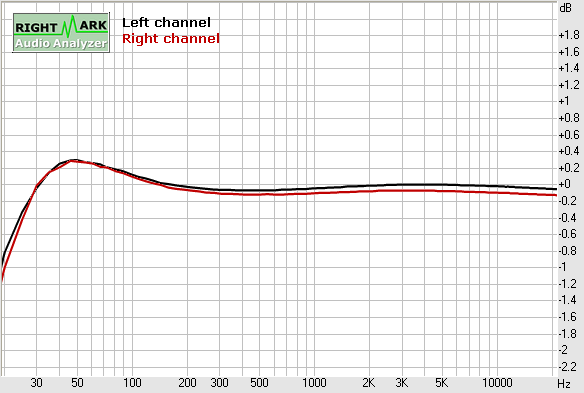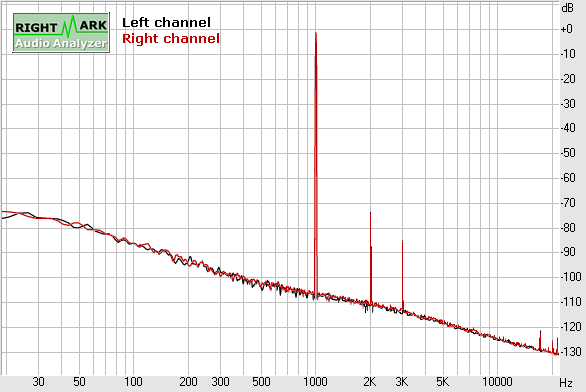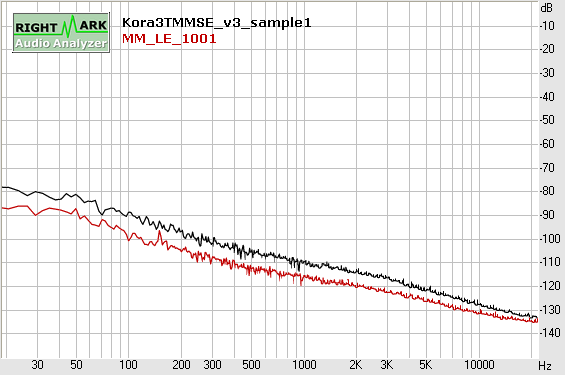As I've recently stopped production of the "Special Edition" version of the Kora 3T phono stage (the "Limited Edition" version is still available), I've uploaded a short history of its development and full circuit diagrams for both MM and MC versions at the "Special Edition" level. The Limited Edition MC version was awarded the "Phono stage of the year" title by Hi-Fi World magazine in 2009 and it is still the phono stage to beat, in my opinion. I will be happy to answer possible questions here.
Enjoy!
Alex
Enjoy!
Alex
Thank you very much for sharing it.
It looks like a very nice design. I will post more later.
Anyhow, please, also follow the thread MasterPiece and give a contribute to it if you feel like it 🙂 ...
I know...I know....this is subliminal commercial.... what can I do?! 🙂 🙂
Thanks again for sharing!
It looks like a very nice design. I will post more later.
Anyhow, please, also follow the thread MasterPiece and give a contribute to it if you feel like it 🙂 ...
I know...I know....this is subliminal commercial.... what can I do?! 🙂 🙂
Thanks again for sharing!
It looks like a very nice design. I will post more later.
Thank you! I've read a bit of your thread and found that you've said:
I have noticed that it is very hard to design an MC stage with enough gain with relative simple circuit (except for paradise) or at least with the different circuits we explored so far I am sure there are better ways out there I simply don't know them.
FYI, the MC version of the Kora 3T has gain 62dB at 1kHz - enough for all but the lowest output cartridges and referred to the input noise is about 100nV RMS (A-wtd). Not bad at all for such a simple circuit.
Cheers
Alex
Thank you! I've read a bit of your thread and found that you've said:
FYI, the MC version of the Kora 3T has gain 62dB at 1kHz - enough for all but the lowest output cartridges and referred to the input noise is about 100nV RMS (A-wtd). Not bad at all for such a simple circuit.
Cheers
Alex
Yep I agree with you. I think it is a nice relative simple design.
However I meant to say to get enough gain with just one gainstage (actually two stages input and VAS) and get 62dB using only Jfets.
But eather way I am folding back to the two stage design as well.
Again thank you for sharing your design.
Here are some measurement results for the Kora 3T MM SE - the frequency response using precision (<0.1% error) reverse RIAA and the distortion spectrum for 1kHz 1V RMS output. Both graphs are typical for production units.
Cheers
Alex


Cheers
Alex


Last edited:
G'day all, I'm glad to see this thread and it's quite timely too as hopefully I will take ownership of an ANT Kora 3T phono stage shortly.
I've been building some simple FET audio circuitry of late and they do sound 'nice'. Maybe it's 'euphonic' distortion perhaps but it is a joy to listen to! Regards, Felix.
I've been building some simple FET audio circuitry of late and they do sound 'nice'. Maybe it's 'euphonic' distortion perhaps but it is a joy to listen to! Regards, Felix.
Last edited:
G'day all, I'm glad to see this thread and it's quite timely too as hopefully I will take ownership of an ANT Kora 3T phono stage shortly.
I've been building some simple FET audio circuitry of late and they do sound 'nice'. Maybe it's 'euphonic' distortion perhaps but it is a joy to listen to! Regards, Felix.
Hi Felix,
Apparently the parcel is already in Brisbane!
😉
Cheers
Alex
G'day mate, that's good to hear, alas within this country the postal services can be a mite slow especially getting up here in the north of Queensland!
I am really looking to comparing it against my beloved DIY ESP P06 phono stage which I regard as truly 'reference' quality.
If the ANT Kora 3T is better than the P06, that will be extremely impressive indeed! Regards, Felix.
I am really looking to comparing it against my beloved DIY ESP P06 phono stage which I regard as truly 'reference' quality.
If the ANT Kora 3T is better than the P06, that will be extremely impressive indeed! Regards, Felix.
Hi Alex, nice simple elegant circuits as always. Why the BAV clamp bridge? Protecting the SIPMOS device's gate for hot plugging input abuse, or something different? I have some BSS135 for low dissipation position in HV cascode CCS use but never got to see about its intrinsic noise, what is the nVsqrtHz for its BSS139 bro? Mosfets are not famous for low noise, but some DMOS can be nice exceptions? Reminded me I am overdue for those BS170 switchers I got to test for audio use because I liked their 320mS gfs and 24pF Ciss. Enhancement mode though, they won't self bias.
Hi Alex, nice simple elegant circuits as always. Why the BAV clamp bridge? Protecting the SIPMOS device's gate for hot plugging input abuse, or something different? I have some BSS135 for low dissipation position in HV cascode CCS use but never got to see about its intrinsic noise, what is the nVsqrtHz for its BSS139 bro?
The diodes are for protection. I have no returns of faulty production units for 4 years of production.
The noise of the BSS139 according to my estimate is about 15-20nV/sqrtHz @ 1kHz or about the same as for the TL072 opamp. The A-wtd noise of the Kora 3T MM SE with 1kOhm source impedance is about -81dbA for 1V RMS output, as it has ~39dB gain at 1kHz it would be ~1uV A-wtd RMS referred to the input. The LE version has about a half of that noise but even for the SE as described the noise is never an issue in real life.
Cheers
Alex
That bridge reminds current input overload protection circuitry in good DMMs.🙂 But they don't use fast ones there like you do for catching fast gate threatening transients, their job is just to route away the current from the shunt reference resistors until the HRC fuses heat up enough to blow.
15-20nVrtHz hmm... not bad for a Mosfet, still 15-20 times higher than what a K170 can do, but the Mosfet's gFS gives you ample gain for single stage. Min. noise goal is not a can't do without, priorities contention area, its MM after all. Its still your SRPP but with passive RIAA and output left inverted, yes? What subjective parameter the bias trimmer changes that has enough impact so you gave it as an externally accessible feature to the user in some versions?
15-20nVrtHz hmm... not bad for a Mosfet, still 15-20 times higher than what a K170 can do, but the Mosfet's gFS gives you ample gain for single stage. Min. noise goal is not a can't do without, priorities contention area, its MM after all. Its still your SRPP but with passive RIAA and output left inverted, yes? What subjective parameter the bias trimmer changes that has enough impact so you gave it as an externally accessible feature to the user in some versions?
Its still your SRPP but with passive RIAA and output left inverted, yes?
Yes.
What subjective parameter the bias trimmer changes that has enough impact so you gave it as an externally accessible feature to the user in some versions?
The biasing changes sound in a way that makes it more natural, the sound stage opens and everything snaps to focus. I had to provide it as an external control as I've found that the precise point is cartridge and set-up dependant. The operating point change alters the transfer characteristic and the "best" point from the generator can be set by the least residue in the multi-tone IMD measurement. However as any cartridge has it's own non-linearities (and these depend on the cartridge setup, tracking weight, VTA etc.) a slight deviation from that point can actually provide a better sound in a particular set-up.
Cheers
Alex
Thanks for the detailed answer. Is it also fitting the concept of the sweet spot mutual error cancellation philosophy again as with ''tuned'' CCS Jfet loading lets say?
Thanks for the detailed answer. Is it also fitting the concept of the sweet spot mutual error cancellation philosophy again as with ''tuned'' CCS Jfet loading lets say?
Yes 😉 .
Cheers
Alex
Hi Alex
Thanks for your interesting thread.
And congratulations on the best phono-pre award !
I see your phono-pre was tested by 'Inverse RIAA'.
I am interested in making a 'reference' network at present.
I have looked at various 'takes' on Inverse RIAA.
All but 1 seen so far, remain for me, less than convincingly accurate ( or just plain crazy ! ).
I'm guessing you have your own 'take' on Inverse RIAA for your testing.
Perhaps you have adopted your own referance network.
Would you have any general comments to make about Inverse RIAA.
Perhaps you have a schematic of your own network, you might post.
Cheers
Si.
Thanks for your interesting thread.
And congratulations on the best phono-pre award !
I see your phono-pre was tested by 'Inverse RIAA'.
I am interested in making a 'reference' network at present.
I have looked at various 'takes' on Inverse RIAA.
All but 1 seen so far, remain for me, less than convincingly accurate ( or just plain crazy ! ).
I'm guessing you have your own 'take' on Inverse RIAA for your testing.
Perhaps you have adopted your own referance network.
Would you have any general comments to make about Inverse RIAA.
Perhaps you have a schematic of your own network, you might post.
Cheers
Si.
Differences between the Special vs Limited?
As the title says. I'm seeking a phono stage that can be easily configured for MC and MM with adjustable loading capabilities. Curious about the differences in the two stages.
As the title says. I'm seeking a phono stage that can be easily configured for MC and MM with adjustable loading capabilities. Curious about the differences in the two stages.
As the title says. I'm seeking a phono stage that can be easily configured for MC and MM with adjustable loading capabilities. Curious about the differences in the two stages.
The Kora 3T circuit can be easily adapted to have an adjustable cartridge load thought I personally prefer not to have any additional switching on the input so I usually just solder in whatever load is required.
The most important difference between the SE and the LE versions is in the type of FETs used - LE uses a completely different type of FETs with about 6-7dB lower noise. Also there are differences in the quality of passive components used and their matching. All passive components for the LE version are matched to 0.1% between channels, output capacitors are Black Gate and premium resistors are used in several positions. That is all I can say as the LE is still a production item.
Cheers
Alex
Here is a noise floor comparison between the Kora 3T MM SE and MM LE units I've done some while ago.

Last edited:
The Kora 3T circuit can be easily adapted to have an adjustable cartridge load though I personally prefer not to have any additional switching on the input so I usually just solder in whatever load is required.
You do not need switching to implement externally-adjustable cartridge load, Alex. This feature is essential, IMO - however, IME switches at these very low signal levels degrade the sound (compared to if they were not there).
What I do is have a parallel pair of inputs RCAs - so the phono cable goes in one pair and "loaded" plugs go in the other. Best to make the default input load 100K (instead of 47K) in this instance. 🙂
Regards,
Andy
You do not need switching to implement externally-adjustable cartridge load, Alex. This feature is essential, IMO - however, IME switches at these very low signal levels degrade the sound (compared to if they were not there).
What I do is have a parallel pair of inputs RCAs - so the phono cable goes in one pair and "loaded" plugs go in the other. Best to make the default input load 100K (instead of 47K) in this instance. 🙂
Regards,
Andy
Hi Andy,
Yes, I know about that approach too 😉 . However I still prefer a properly soldered load at these signal levels.
Cheers,
Alex
Last edited:
- Status
- Not open for further replies.
- Home
- Source & Line
- Analogue Source
- The A.N.T. Audio Kora 3T Phono Stage circuit published.